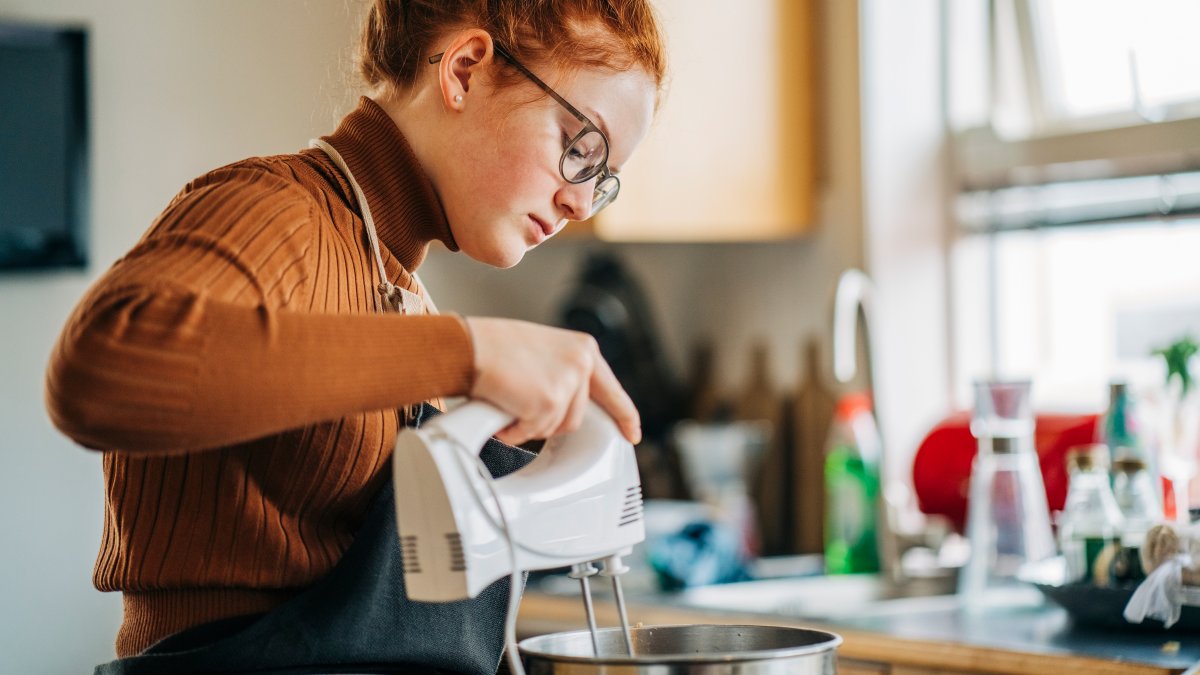4 alternatives for baking without plain flour and bread flour
Have you wanted to bake something but haven’t had the flour needed for your recipe? Dr Veronica Giacintucci, Teaching Fellow in Food Science, shares her top 4 alternatives using ingredients found in your cupboards.

Rice, quinoa, almond and pulse flours are great alternatives when you’re running low on your usual supplies.

Why do we use flour?
Plain flour and bread flour come from wheat grain and contain lots of proteins. These proteins can interact with water and create a network during baking that is able to:
- Trap air pockets produced by the yeast and leavening agents (substances that cause doughs and batters to expand).
- Trap air pockets produced by the evaporation of water and expansion of air inside the oven.
These, combined with gluten’s elasticity and extensibility (ability to be stretched), result in structured and airy baked goods – perfect for a loaf of bread.
We must consider all these properties of plain flour and bread flour when we look for alternatives.
My top 4 replacements
1. Rice flour
A traditional ingredient in many eastern recipes, rice flour is gluten free and a great alternative that you might have in your cupboard. Due to the absence of gluten, rice flour can’t retain gas produced when it’s left to rise, so you’ll will need to add extra ingredients in equal proportions, to help trap air pockets in your batter or dough. These can include eggs and milk, or if you’re vegan, aquafaba, more commonly known as chickpea cooking water (found in your standard supermarket tin of chickpeas).
Rice flour has a mild taste, meaning the flavour of your bread won’t be affected. It’s also has low levels of sodium (salt) and acts as a hypoallergenic – perfect if you’re sensitive to different types of foods or you’re gluten free.
Top tip: try blending your remaining plain flour with rice flour.
2. Quinoa flour
Quinoa flour, another gluten free alternative, is a great source of proteins, carbohydrates and essential minerals. You can use it on its own for smaller loaves, but the downside is that these will be less silky in texture.
Top tip: mix together quinoa flour with bread flour for larger loaves.
Don’t have any quinoa flour in your cupboard? Don’t fret – if you have quinoa seeds and a blender, you can make your own! Just toast your quinoa in a pan, then grind and sieve.
Top tip: if you’re finding your bakes don’t have good structure, try adding eggs, milk, or aquafaba.
3. Almond flour
Almond flour, a core ingredient in Bakewell tarts, is high in fibre and proteins, while being low in saturated fat. It’s perfect for creating sticky and oily doughs, and baked goods with a characteristic almond flavour. If you’re looking to bake bread, almond flour is great for smaller loaves as it has tiny amounts of gluten in – handy if you’re looking to make a fresh batch each day.
Top tip: combine bread or soy flours with almond flour for larger loaves.
You can make your own almond flour from the comfort of your home – just blanch almonds with boiling water to remove their skin, then when they’re dry, pulse them in a food processor until they reach a flour-like consistency, then sieve the mix. Be careful not to blend them too much or you’ll end up with almond butter.
4. Pulse flours
Pulse flours are made of dry, edible seeds from plants, like beans, chickpeas and lentils, and when used, they increase the nutritional content of baked goods. The proteins in pulse flours give structure and help to create soft textures – perfect for breads and cakes.
However, it’s important to understand that these flours might impact colour and flavour. For example, black bean flour will create darker doughs and batters that taste different.
Top tip: try adding cocoa to your recipes to overcome flavour and colour changes.
Now that you know my top alternatives, have a go at making some flour replacement recipes in your kitchen.
Find out more about our School of Biosciences and Medicine.
References
Jan S., Jan K., DC Saxena. (2016). Flow property measurement of rice flour- A Review. MATEC Web of Conferences, 57, 04004.
Miñarro B., Albanell E., Aguilar N., Guamis B., Capellas M. (2012). Effect of legume flours on baking characteristics of gluten-free bread. Journal of Cereal Science, 56(2), pp. 476-481.
Lorentz K., Coulter L. (1991). Quinoa in baked products. Plant Foods for Human Nutrition, 41, pp. 213-233.
